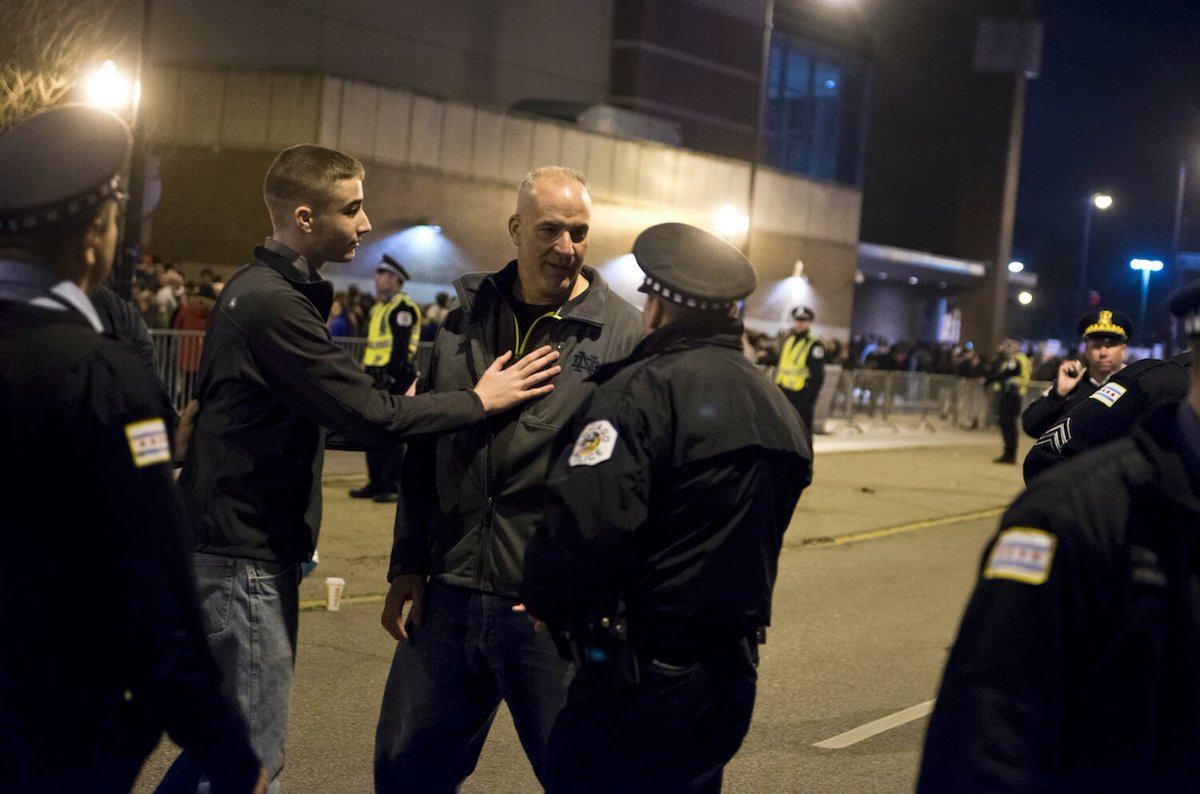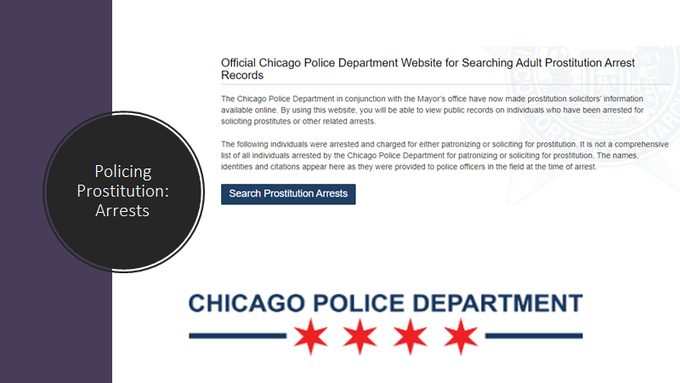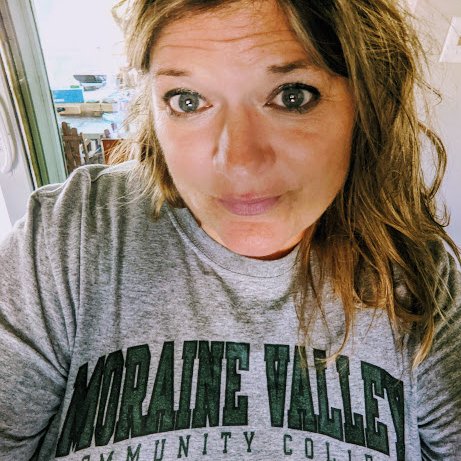
What is the MOST dangerous call in policing? Join me tonight at 7pm, cst, as we discuss Police Officers as peace-keepers.
#CRJ201 #Peacekeepers #LESM
#CRJ201 #Peacekeepers #LESM
Good evening, all, tonight we will be discussing the role of police in #peacekeeping and #ordermaintenance
#CRJ201 #Peacekeepers #Chapter8
#CRJ201 #Peacekeepers #Chapter8

Let's jump right into the soup with a THINKING CHALLENGE:
Do you believe that Chicago Police Officers should be required to disclose their vaccination status?
#CRJ201 #Peacekeepers #Chapter8
Do you believe that Chicago Police Officers should be required to disclose their vaccination status?
#CRJ201 #Peacekeepers #Chapter8
THINKING CHALLENGE:
If required by your department, would YOU disclose your vaccination status?
#CRJ201 #Peacekeepers #Chapter8 #CPD
If required by your department, would YOU disclose your vaccination status?
#CRJ201 #Peacekeepers #Chapter8 #CPD
THINKING CHALLENGE:
Do you believe disclosure of vaccination status is a Union matter to negotiate?
#CRJ201 #Peacekeepers #Chapter8 #CPD
Do you believe disclosure of vaccination status is a Union matter to negotiate?
#CRJ201 #Peacekeepers #Chapter8 #CPD
Tonight we look how order maintenance calls raise important questions about the police role.
Should police be expected to respond to non-crime related calls?
#CRJ201 #Peacekeepers #OrderMaintenance
Should police be expected to respond to non-crime related calls?
#CRJ201 #Peacekeepers #OrderMaintenance
THINKING CHALLENGE: What role do you think police MOST commonly serve on a daily basis?
#CRJ201 #PeaceKeepers
#CRJ201 #PeaceKeepers
People call the police for an infinite range of problems: ~ arguments, & fights, and domestic disputes;
~ medical emergencies; assistance for dependent persons, including drunks, missing persons, and juvenile runaways;
~ and public nuisances
#CRJ201 #PeaceKeepers
~ medical emergencies; assistance for dependent persons, including drunks, missing persons, and juvenile runaways;
~ and public nuisances
#CRJ201 #PeaceKeepers

Stephen Mastrofski identifies the following four different ways that non-crime calls for service can help improve police effectiveness in dealing with crime:
~The crime prophylactic model
~The police knowledge model
~The social work model
~The community cooperation model
~The crime prophylactic model
~The police knowledge model
~The social work model
~The community cooperation model

The crime prophylactic model holds that police intervention can defuse potentially violent situations and prevent them from escalating into criminal violence
#CRJ201 #Peacekeepers
#CRJ201 #Peacekeepers

The police knowledge model holds that non-crime calls give officers a broader exposure to the community with the result that they have more knowledge that will help them solve crimes
#CRJ201 #Peacekeepers


#CRJ201 #Peacekeepers



The social work model holds that the latent coercive power of the police can help to steer potential lawbreakers into law-abiding behavior
#CRJ201 #Peacekeepers


#CRJ201 #Peacekeepers



The community cooperation model holds that effective responses to non-crime calls can help the police to establish greater credibility with the public
#CRJ201 #Peacekeepers
#CRJ201 #Peacekeepers

All of these models, however, assume that crime fighting is the central part of the police role and that non-crime calls are subordinate to it.
#CRJ201 #Peacekeepers
#CRJ201 #Peacekeepers

THINKING CHALLENGE: The crime fighting is the central part of the police role and that non-crime calls are subordinate to it
#CRJ201 #Peacekeepers #OrderMaintenance
#CRJ201 #Peacekeepers #OrderMaintenance
Most experts on policing today, however, argue that order maintenance is at least as important as crime fighting, if not more important.
curesearch.org/Police-Officer…
#CRJ201 #Peacekeepers


curesearch.org/Police-Officer…
#CRJ201 #Peacekeepers



Police officers exercise great discretion in handling non-crime incidents. Typically, they handle situations informally and take no official action
#CRJ201 #Peacekeepers
#CRJ201 #Peacekeepers
Traffic stops are also one of the most dangerous police tasks, in terms of officers killed or injured on duty, because some stops involve armed and dangerous criminals.
#CRJ201 #Peacekeepers
#CRJ201 #Peacekeepers

THINKING CHALLENGE: When was the last time you were stopped by the police (ticketed or not) while driving?
#CRJ201 #Peacekeepers
#CRJ201 #Peacekeepers
THINKING CHALLENGE: How many Americans are stopped by the police in a traffic capacity in a given year?
#CRJ201 #Peacekeepers
#CRJ201 #Peacekeepers
In this edition of Good to Know, Sergeant Julie Judson shows us the basics of Washington State Patrol traffic stops, and how drivers can assist with safety for both motorists and the officer
#CRJ201 #Peacekeepers
#CRJ201 #Peacekeepers

Police pull over drivers to hand out ice cream instead of tickets. "Are you familiar with vehicle code 1.7.3.9? It’s actually against the law to drive on a hot day without an ice cream cone."
#CRJ201 #Peacekeepers
#CRJ201 #Peacekeepers
THINKING CHALLENGE: Would you be glad to be stopped for GOOD driving recognition?
#CRJ201 #Peacekeepers
#CRJ201 #Peacekeepers
Most states increased the penalties for drunk driving, federal regulations forced states to raise the legal drinking age to 21, and local police departments intensified enforcement efforts
#CRJ201 #Peacekeepers
#CRJ201 #Peacekeepers

Getting drunk or high and then driving is a bad idea. Impaired driving is a dead end that can have serious consequences, for the driver, the victims and the families and friends of both
#CRJ201 #Peacekeepers
#CRJ201 #Peacekeepers

The Houston Police Department gave this production team rare, behind-the-scenes access to DWI enforcement, prisoner arrests and processing #10000Lives
#CRJ201 #Peacekeepers @houstonpolice
#CRJ201 #Peacekeepers @houstonpolice
Evolving attitudes about domestic violence has led to new laws & policies, including increased criminal penalties, the development of intervention & treatment programs for batterers, & changes in police department policies
#CRJ201 #Peacekeepers
#CRJ201 #Peacekeepers

We took an in-depth look at #PolicingDomesticDisputes last week
#CRJ201 #Peacekeepers
https://twitter.com/michelle_furlow/status/1448721331600625664
#CRJ201 #Peacekeepers
Prostitution is a common problem in many communities across the country
#CRJ201 #Peacekeepers #PolicingProstitution
#CRJ201 #Peacekeepers #PolicingProstitution

THINKING CHALLENGE: Based on recent research, what percentage of Americans have purchased sex from a prostitute?
#CRJ201 #Peacekeepers #PolicingProstitution
#CRJ201 #Peacekeepers #PolicingProstitution
THINKING CHALLENGE: Gross revenue from prostitution is estimated to be annually in the United States?
#CRJ201 #Peacekeepers #PolicingProstitution
#CRJ201 #Peacekeepers #PolicingProstitution
THINKING CHALLENGE: If prostitution is so prevalent, should it be illegal?
#CRJ201 #Peacekeepers #PolicingProstitution
#CRJ201 #Peacekeepers #PolicingProstitution
Policing prostitution includes a variety of actors & behaviors
#CRJ201 #Peacekeepers #PolicingProstitution
#CRJ201 #Peacekeepers #PolicingProstitution

THINKING CHALLENGE: What type of prostitute is most prevalent?
#CRJ201 #Peacekeepers #PolicingProstitution
#CRJ201 #Peacekeepers #PolicingProstitution
For the patrol officer, the following are the primary police objectives:
~To keep streetwalking confined to a limited area (containment)
~To prevent related disorders from breaking out (keep the peace)
#CRJ201 #Peacekeepers #PolicingProstitution
~To keep streetwalking confined to a limited area (containment)
~To prevent related disorders from breaking out (keep the peace)
#CRJ201 #Peacekeepers #PolicingProstitution

Prostitution is often accompanied by an ancillary crime: a more serious offense that results from prostitution. “Johns” may be robbed, or a prostitute may be assaulted by a pimp, manager, or customer
#CRJ201 #Peacekeepers #PolicingProstitution
#CRJ201 #Peacekeepers #PolicingProstitution

Arrests of prostitutes typically involve different motives. Conviction and punishment is not always the primary goal
#CRJ201 #Peacekeepers #PolicingProstitution
#CRJ201 #Peacekeepers #PolicingProstitution

THINKING CHALLENGE: What should be the primary objective in policing prostitution?
#CRJ201 #Peacekeepers #PolicingProstitution
#CRJ201 #Peacekeepers #PolicingProstitution
Policing prostitution is difficult for several reasons,it's a “victimless crime,” w/ no complaining party. Wiretaps, informants, undercover work, & other covert investigative techniques raise a number of difficult legal questions
#CRJ201 #Peacekeepers #PolicingProstitution
#CRJ201 #Peacekeepers #PolicingProstitution

Equal protection problems are raised by the traditional police practice of arresting only the prostitute and ignoring the customer even though both are guilty of violating the law against commercialized sex
www2.illinois.gov/dcfs/aboutus/p…
#CRJ201 #Peacekeepers #PolicingProstitution
www2.illinois.gov/dcfs/aboutus/p…
#CRJ201 #Peacekeepers #PolicingProstitution

Hannah Estabrook, MA, LPCC-S works in the Franklin County Municipal Court as Coordinator of CATCH Court, a Specialized Docket for victims of prostitution and human trafficking
#CRJ201 #Peacekeepers #PolicingProstitution
#CRJ201 #Peacekeepers #PolicingProstitution

Sex trafficking may be happening behind the walls of businesses you pass daily - including the some of the massage parlors and holistic centers in your community
#CRJ201 #Peacekeepers #PolicingProstitution
#CRJ201 #Peacekeepers #PolicingProstitution
The homeless problem creates a number of challenges for the police. Homeless people establish semi-permanent camps in public parks, resist transport to homeless shelters, and sleep in bus stations and subways in some cities
#CRJ201 #Peacekeepers #PolicingProstitution
#CRJ201 #Peacekeepers #PolicingProstitution

Some advocates for the homeless say that people who live on the streets of San Diego are being criminalized by the city and police
#CRJ201 #Peacekeepers #PolicingHomelessness
#CRJ201 #Peacekeepers #PolicingHomelessness

Police agencies with homeless outreach teams (HOTs) are concerned about the impact of #COVID19 on how they perform homeless outreach and are wondering how the pandemic should alter their response
police1.com/police-product…
#CRJ201 #Peacekeepers #PolicingHomelessness
police1.com/police-product…
#CRJ201 #Peacekeepers #PolicingHomelessness

San Diego Police Increase Ticketing Of The Homeless During The Pandemic
kpbs.org/news/2020/may/…
#CRJ201 #Peacekeepers #PolicingHomelessness

kpbs.org/news/2020/may/…
#CRJ201 #Peacekeepers #PolicingHomelessness


THINKING CHALLENGE: What percentage of police contact involves an individual who is mentally ill?
#CRJ201 #Peacekeepers #PolicingMentalIllness
#CRJ201 #Peacekeepers #PolicingMentalIllness
The police usually become involved because someone defines the situation as a problem and no other solution available
#CRJ201 #Peacekeepers #PolicingMentalIllness
#CRJ201 #Peacekeepers #PolicingMentalIllness

THINKING CHALLENGE: The police come into contact with the mentally ill in a number of ways, which is most common? Calls from ...
#CRJ201 #Peacekeepers #PolicingMentalIllness
#CRJ201 #Peacekeepers #PolicingMentalIllness
Police officers exercise great discretion in handling the mentally ill. The basic options include the following:
~Hospitalization
~Arrest
~Informal disposition
#CRJ201 #Peacekeepers #PolicingMentalIllness
~Hospitalization
~Arrest
~Informal disposition
#CRJ201 #Peacekeepers #PolicingMentalIllness

The Memphis Police Department has pioneered the "Memphis Model," which aims to keep both officers and citizens safe and send fewer people to jail, has spread to almost 3,000 law enforcement agencies
#CRJ201 #Peacekeepers #PolicingMentalIllness
#CRJ201 #Peacekeepers #PolicingMentalIllness

THINKING CHALLENGE: What percentage of police contact with people in a mental health crisis result in informal disposition, calming the individual down?
#CRJ201 #Peacekeepers #PolicingMentalIllness
#CRJ201 #Peacekeepers #PolicingMentalIllness
THINKING CHALLENGE: What percentage of police contact with people in a mental health crisis result in informal disposition, calming the individual down?
#CRJ201 #Peacekeepers #PolicingMentalIllness
#CRJ201 #Peacekeepers #PolicingMentalIllness

In terms of order maintenance and peacekeeping, which topic was of most interest to you?
#CRJ201 #Peacekeepers #PolicingMentalIllness
#CRJ201 #Peacekeepers #PolicingMentalIllness
This hour flew by, my friends! I cannot wait to see the results of our survey questions. I love the variety of insight.
Are the survey questions helpful?
#CRJ201 #Peacekeepers #PolicingMentalIllness
Are the survey questions helpful?
#CRJ201 #Peacekeepers #PolicingMentalIllness
How would you rate today's look at #OrderMaintenance and police as peace keepers?
#CRJ201 #Peacekeepers
#CRJ201 #Peacekeepers
Next week we will take a look at the strategies to reduce crime, I look forward to discussing with you then!
Please send me all insight, questions, feedback
#CRJ201 #AmericanPolicing #MoraineValley
Please send me all insight, questions, feedback
#CRJ201 #AmericanPolicing #MoraineValley
• • •
Missing some Tweet in this thread? You can try to
force a refresh








